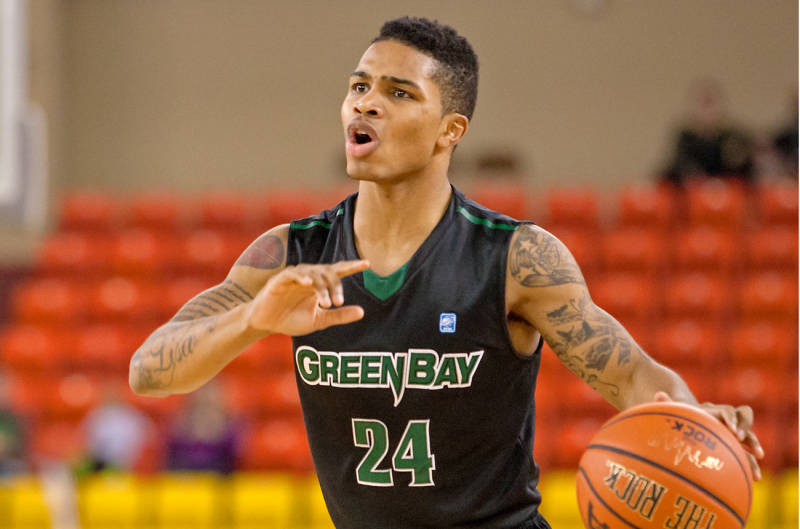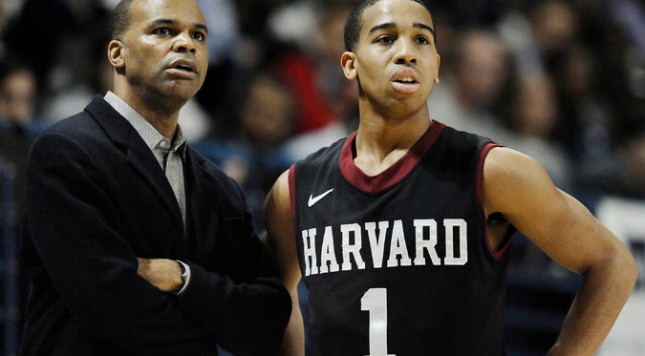We are still early in the 2014-2015 season, and most leagues have not even started conference play yet, but it is already time to talk about one of the best parts of the NCAA tournament: bracket busters. Although the lines separating low-majors, mid-majors and high-majors get blurrier and blurrier every year (the packs might begin to separate again with the new Power 5 structure, but that’s another post…), those Cinderella stories are part of what makes March great.
Let’s take a look at 10 teams that have a chance to ruin your bracket (or win you your pool) in March:
1. UC Santa Barbara (Big West)
UCSB features a potential NBA draft pick in senior forward Alan Williams, and the Gauchos have already shown flashes of what makes them so dangerous. They lost by 10 in Allen Fieldhouse, holding Kansas under a point per possession, and they’re also the closest any team has come to knocking off Colorado State, losing to the Rams by two in a game in which Williams went for 22 points and 11 rebounds. Williams, who is currently averaging 18 points per game for the Gauchos, is one of the best rebounders in the country. He draws a ton of fouls, and has added rim protection to his repertoire this season. With a player like that, there’s a chance for UCSB to beat anyone it might meet in March.
2. Eastern Washington (Big Sky)
The Eagles were my preseason pick to win the Big Sky, and they have played a tough enough nonconference schedule to have a top 50 RPI right now, which means even though the Big Sky is a weak conference this year, they’ll likely avoid the fate of Weber State last season in having to play in the 1/16 game. The Eagles shoot a ton of threes, and are shooting 39.4 percent beyond the arc, so whichever team sees them in the opening round will be terrified. They should be.
3. Wyoming (Mountain West)
Colorado State is the darling of the Mountain West, but I like Wyoming just as much. The Cowboys currently average more assists per field goal than any other team in the nation, and are shooting 60.7 percent from two. Head coach Larry Shyatt has done a great job creating easy shots for his players, and they have obviously responded. Larry Nance is putting up great numbers for the Cowboys, and Jason McManamen might have the dunk of the season. Wyoming’s biggest problem will be whether it can keep scoring despite not even trying to rebound on the offensive glass.
4. Wofford (SoCon)
With NCAA tournament experience, this Wofford team should be a tough out come March. Senior guard Karl Cochran has a 23-percent assist rate and an under nine-percent turnover rate. Despite standing just 6-1, he is the best defensive rebounder on the team.
Wofford is also the 10th-best defensive rebounding team in the country, though given the size of its best rebounder, that may or may not hold up against bigger teams. What is really intriguing about the Terriers, though, is they are shooting 43.4 percent on 3-pointers, which can ruin an opponent’s tournament in a hurry.
5. Belmont (Ohio Valley)
Remember Belmont? The statheads’ delight went 14-2 in the Ohio Valley last season but lost in the second round of the conference tournament to Eastern Kentucky. This year the Bruins are just 7-4, but they appear to be the favorites in the league again. What is intriguing about this season’s Bruins is they are currently attempting more than 50 percent of their shots from three. The team is shooting 39.7 percent on threes this season, with Craig Bradshaw leading the way at 48.1 percent on 52 attempts.

Kiefer Sykes will hope to help Green Bay reach the NCAA tournament destination it missed last season.
6. Green Bay (Horizon)
We’re getting a bit obvious with our next two selections here, but the Phoenix are led by Keifer Sykes, who is the heavy frontrunner for Horizon League Player of the Year. Sykes is shooting 53.6 percent on twos and is averaging 18.7 points per game for the Phoenix this season.
Green Bay has an upset win over Miami which should help it avoid a bad seed in March (if the Phoenix make it), but it has lost its two other tests, to Wisconsin and Georgia State, by double digits.
7. Georgia State (Sun Belt)
The best team in Georgia lost by just 10 at Colorado State and gave Iowa State a fight early before fading late. Where Georgia State differs from most mid-majors is that in R.J. Hunter, Ryan Harrow, and Kevin Ware, the Panthers have three legitimate high-major athletes. Harrow is 20th nationally in assist rate, and Hunter has blossomed into the rare go-to scorer who is also efficient. He’s shooting 60 percent on twos despite taking a whopping 34.4 percent of the team’s shots while he’s on the floor. Georgia State is already penciled into one of those 12/5 upsets; you just don’t know it yet.
*

The Lafayette Leopards will attempt to copy their biggest rival, Lehigh, and pull off a first-round NCAA tournament upset
8. Lafayette (Patriot)
Lafayette ranks 7th nationally in 3-point percentage, but what makes the Leopards different from most low-major contenders is they excel inside as well. Lafayette shoots 55.7 percent on twos, ranking 17th nationally.
The Leopards’ big issue is defense. They currently rank 312th in KenPom, and allow opponents to rebound 42 percent of their misses. They also give up too many open threes, and allow opponents to shoot 47 percent on twos. They have some size and experience, and their thin bench won’t hurt them in March, but the Leopards will need to make a ton of threes in order to win, especially since the Patriot League winner will have a chance of being slotted into the 16 line.
9. Louisiana Tech (Conference USA)
With defending conference tournament champs Tulsa on to the AAC, Louisiana Tech is probably the Conference USA favorite. The Bulldogs lost by just two at Syracuse, and currently sit at 66 in the KenPom ratings.
Their profile is currently fairly middling, but when they start playing a lot of C-USA teams it will look much better. Their main point of concern, for now, is ranking 333rd nationally in defensive rebounding.
One stat of note is Louisiana Tech allows opponents to take just 22.4 percent of their shots from three, which is one of the best in the nation.
10. Harvard (Ivy)
I’ll finish it off with the most obvious choice of them all. The Crimson are currently 11th in two-point defense, allowing opponents to shoot just 38.6 percent inside the arc.
Senior Wesley Saunders is playing like a national player of the year candidate, averaging 20.1 points per game , shooting 54.5 percent on twos, and playing some of the best perimeter defense around.
Again, it’s obvious because of what Harvard has done the last two seasons, but if the Crimson can get up to a 6 seed (or, dare we dream, a 5) they look like a good shot to get to the Sweet 16 and perhaps beyond.

